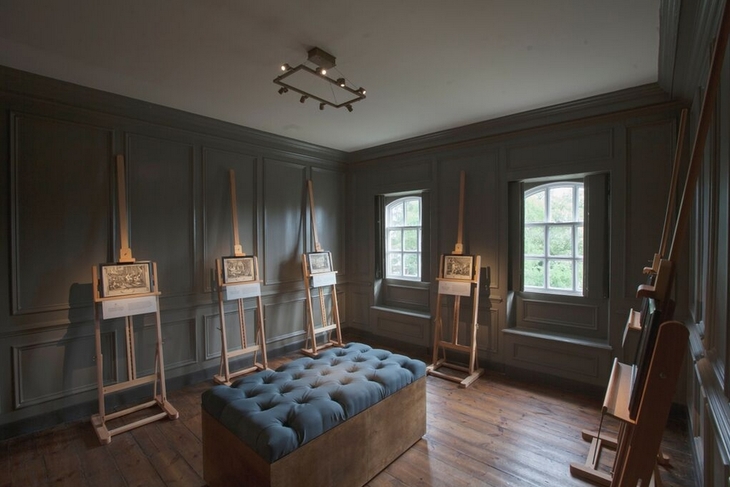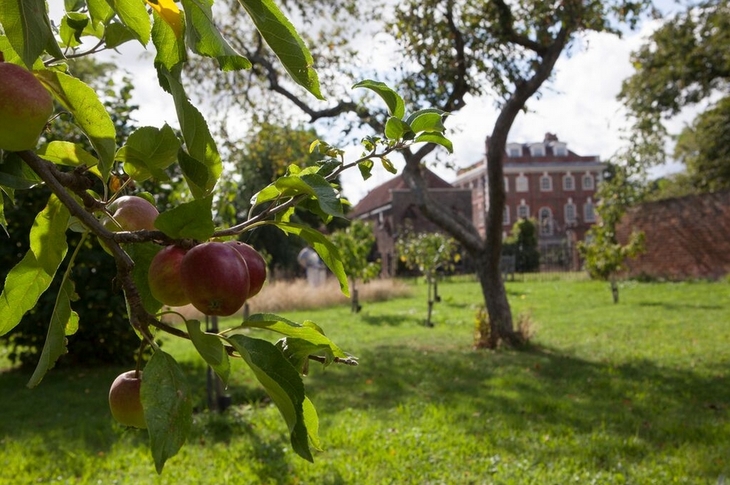
East London isn’t flush with National Trust properties. It has two, to be precise; Hackney’s Sutton House, real-life home to Wolf Hall’s Ralph Sadler, and Eastbury Manor House, that Elizabethan mansion in the middle of a Dagenham housing estate you can’t quite believe you just saw from the Barking flyover.
There was always one more though; you just couldn’t get into it.
Rainham Hall was given to the National Trust in 1949 but for just shy of 70 years it was rented out to tenants - with few (as in none) of the ground rules listed buildings come with today. When the lease expired, however, a rare, perfect storm of funding occurred allowing the house to be finally opened to the public.

The Rainham marshes were the ideal setting for an early-Georgian sea merchant to settle down into respectability whilst keeping an eye on his affairs on the Thames. The house Captain John Harle built in 1729 isn’t that of upper-class nobility, more the prosperous gentility of the ‘middling sorts’. It may have been constructed in cutting-edge Queen Anne style, with splendid mouldings, fancy fireplaces and carved staircases, but compared to the Palladian piles being built by the landed gentry, it was modest.
Unlike most country estates, it was not lived in by the same family for many generations, passing from tenant to tenant; some more colourful than others. An 18th Century Methodist preacher. An early cycling-convert vicar. A Vogue editor. You get the picture.
Then there was a carriage-builder, Herbert Hall Mulliner, who, in 1920, ‘modernised’ the hall in a sort of 1920s-panto reinterpretation of Queen Anne. It involved a lot of invented curlicues and extra fancy bits. Those fancy bits were further fancified by society photographer Anthony Denney in the 1960s, who gilded and marbled everything in plain sight.

This gave the National Trust a problem; which period to take the house back to? They asked the local people. the local people basically said ‘all of them.’ The fact the National Trust has managed to do that and keep some kind of integrity and cohesion is quite an achievement — even if it did take two years and £2.5m.
Pretty much all the house is open, and visitors are encouraged to open doors and peer into corners. The basement and attic hold the stores and offices, but that still leaves three floors to explore in their entirety.
Each room has been taken on its own merits, which leaves some striking oddities, not least the bright blue, rag-rolled bedroom straight out of the 1980s. Anthony Denney’s gilding has remained, as have Mulliner’s additions, including a copy of John Harle’s gravestone inscription over the main fireplace that was definitely not on the original plans.
Because the house can’t be associated with any one character, but has many small stories to tell, there’s going to be an almost exhibition-like feel to its presentation. For the first 18 months or so, the installations are to do with the house’s first owner. Each room explores an area of the 18th Century London world John Harle inhabited, whether it’s a representation of his fleet in the bath, an interpretation of his wife’s saffron-yellow wedding dress in the master bedroom or a collection of Hogarth prints on the second floor.

Only 15 people are allowed up on that second floor at any one time, elegantly counted by each being issued with a magnifying glass on a chain; when the quizzing-glasses run out you’ll have to wait your turn. In the meantime, don’t miss the wonderful collection of items found under the floorboards, displayed in special cases like the precious artefacts they are.
Local people have immersed themselves in the project in very practical ways; that hand-sewn yellow dress was made by a local costume-making group, and the interpretation of Lloyd’s coffee house in the downstairs parlour was built by a KPMG worker with a secret passion for cabinet making.
Do try the authentic brew, served by volunteers trained in the art of 18th Century coffee-making, though the spicy 18th century additions, intended to conceal the taste of the river water originally used to make it with, are recommended for information only.

The full-sensory experience continues through the house with soundscapes, some more successful than others. The children chanting nursery rhymes and jolly jack tars singing sea shanties are so beautifully recorded and amplified you’d swear they were genuinely in the next room. Sadly the sounds of the windswept terrain of Harle’s youth on the ground floor are more reminiscent of a toilet cistern.
The National Trust is keen for visitors to return on a regular basis. In the long term, this will mean the changing of displays — from Harle to the children’s nursery the house became after the war to Anthony Denney’s work with Vogue, Elizabeth David and other doyens of the swinging 60s.
In the short term, it will be the gardens, orchard and stables café, designed, as requested by locals, as places for everyone to drop in to, with or without a ticket to the house.
Rainham Hall is open Wednesday to Sunday, 10am-5pm. Admission: Adults £5, children 5-16 years, £2.50. National Trust members and children under five go free. The Stables Café and gardens are open daily 10am-5pm, admission free.
By Sandra Lawrence



